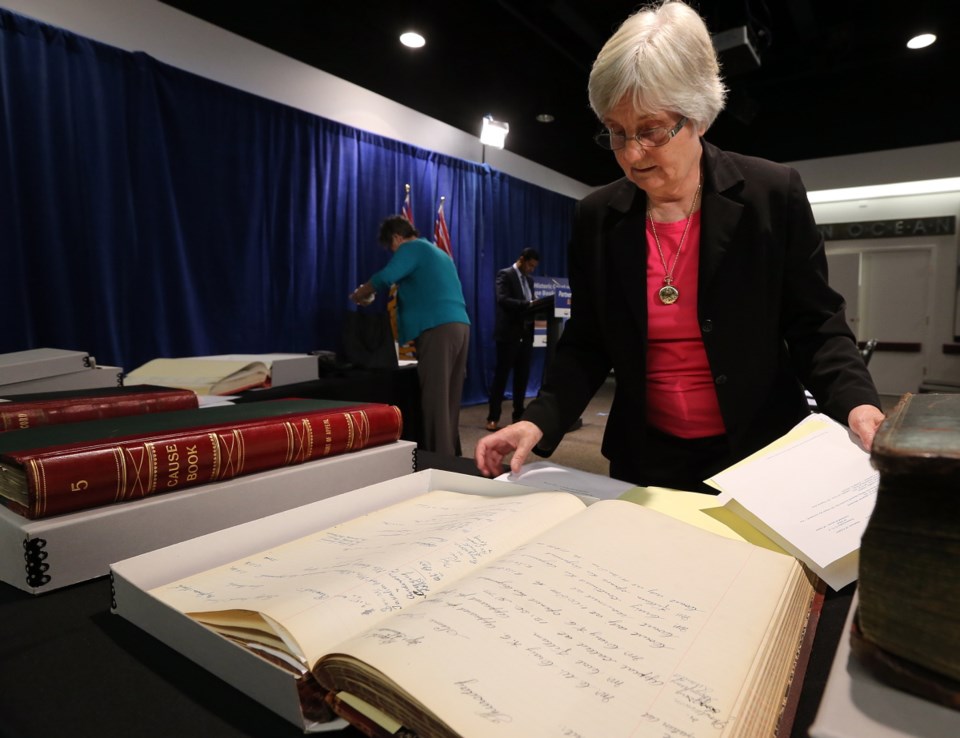Lurid court cases have often drawn the public spotlight in B.C.
Plenty of examples can be found in court records in a collection of B.C.’s legal history that has just been moved to the protective environs of the B.C. Archives at the Royal B.C. Museum from the Vancouver Law Courts basement.
One case that stands out is a 1903-04 lawsuit pitting former B.C. premier and lieutenant-governor James Dunsmuir against his mother over the matter of his inheritance.
“This lawsuit created a stir throughout North America at the turn-of-the-century and made for great tabloid fodder,” said B.C. Attorney General and Minister of Justice Suzanne Anton, speaking at a Victoria gathering to mark the transfer of the historic material.
“I don’t think times change very much on these things.”
Also among the 60 boxes of bound volumes and other items is the record for Regina versus White and Bob, an important 1964 case that marked the first time the Douglas Treaties were recognized as treaties under Canadian law. The result was protection of aboriginal hunting rights.
“As attorney general, as well as being a lawyer and a former Crown prosecutor, I do find British Columbia’s legal history fascinating,” said Anton, whose father, David Ricardo Williams, was a noted legal historian.
“There are so many interesting stories,” she said. “But I think the most compelling one is that British Columbia was settled by the law. Not by arms, not by force, but by the law.”
Anton said the “hero of the day” for recognizing the significance of the now-protected items, which date back to 1897, is B.C. Court of Appeal records officer Christine Gergich.
“Christine took the initiative to have them restored and transferred to the B.C. Archives.”
The material is “an absolute treasure,” Anton said. “They’re an important part of our B.C. history and will be a great resource for historians and for researchers in years to come.”
The records are largely from the B.C. Court of Appeal, which first sat in 1910, but some are from its predecessor, the Supreme Court of B.C. — then also known as the Full Court.
Anton pointed to a number of “cause” books included in the material, heavy volumes that contain summaries of cases and were once toted from place to place by judges.
Laptops have taken their place in modern times, she said.
“For almost a century, case summaries were recorded in cause books, before moving to the index-card system in 1981. Then technology rapidly changed and today everything is recorded electronically, but we still have these old-fashioned records to remind us of what it was like during B.C.’s early days.”
Museum CEO Jack Lohman said the cause books will fill gaps in the existing documentation of court records. Bringing the latest material to the archives makes it accessible to the people of the province, he said.
Protective containers and climate control — regulating both humidity and temperature — are some of the measures taken by archives to safeguard stored items.



